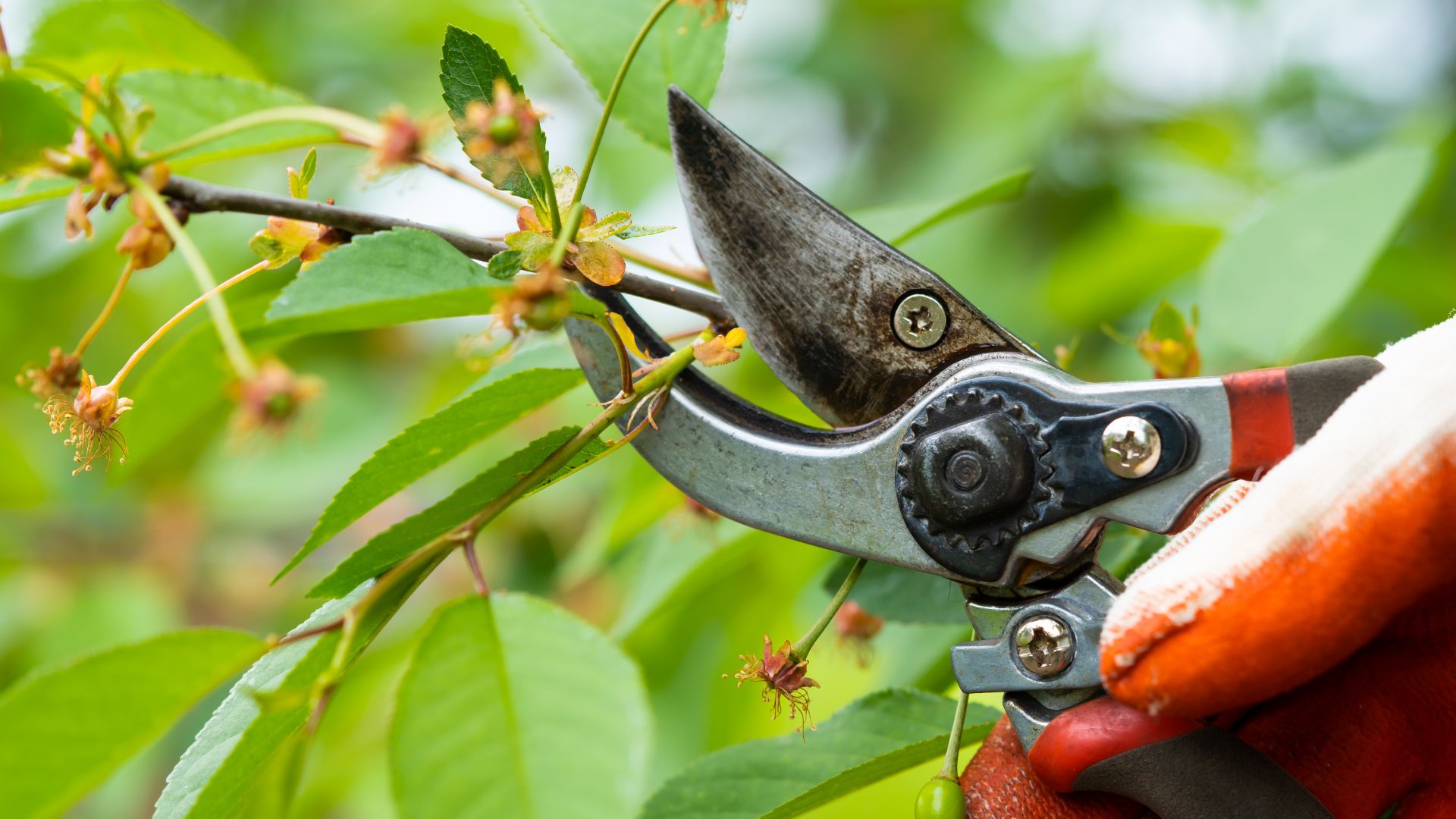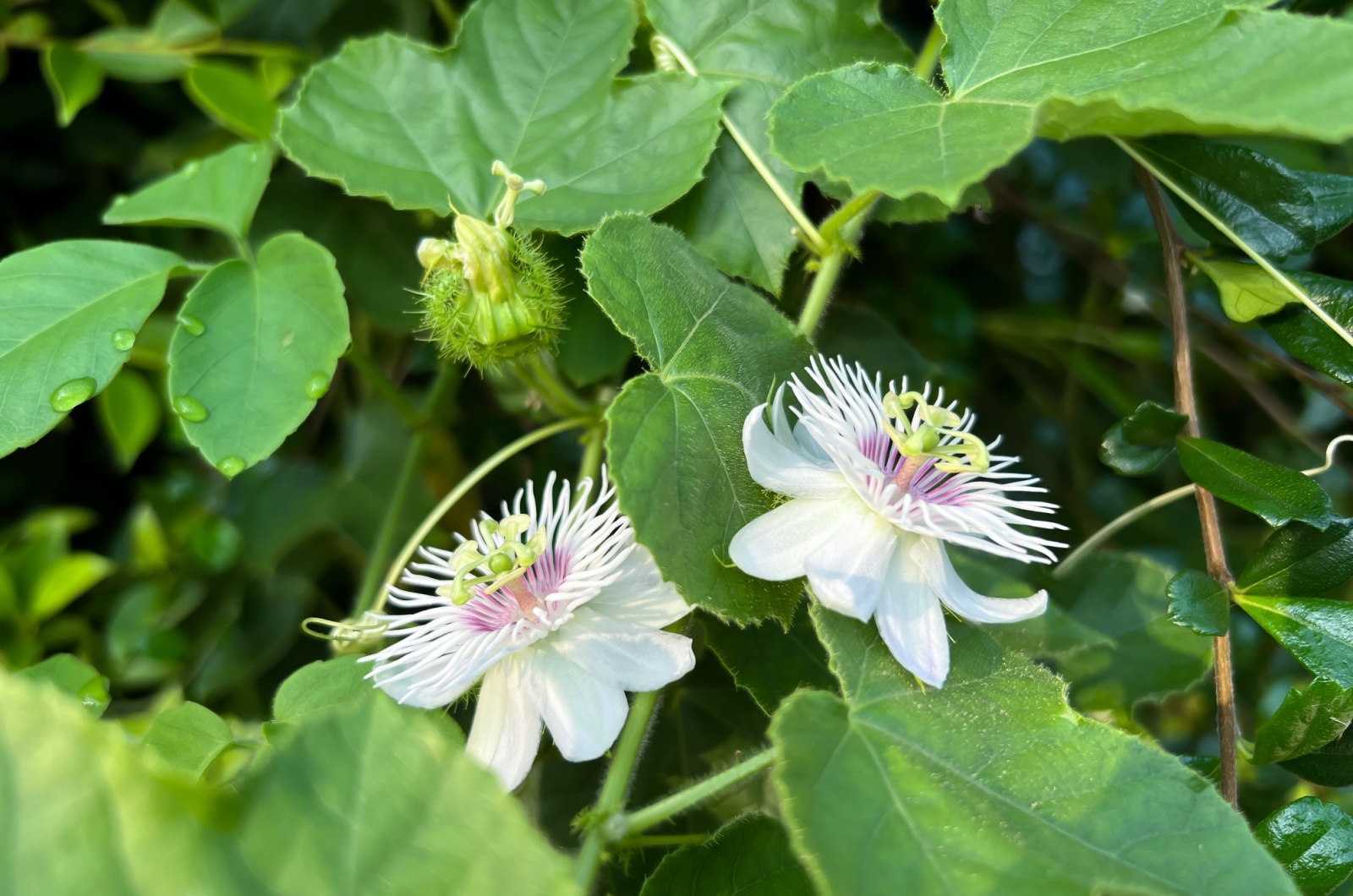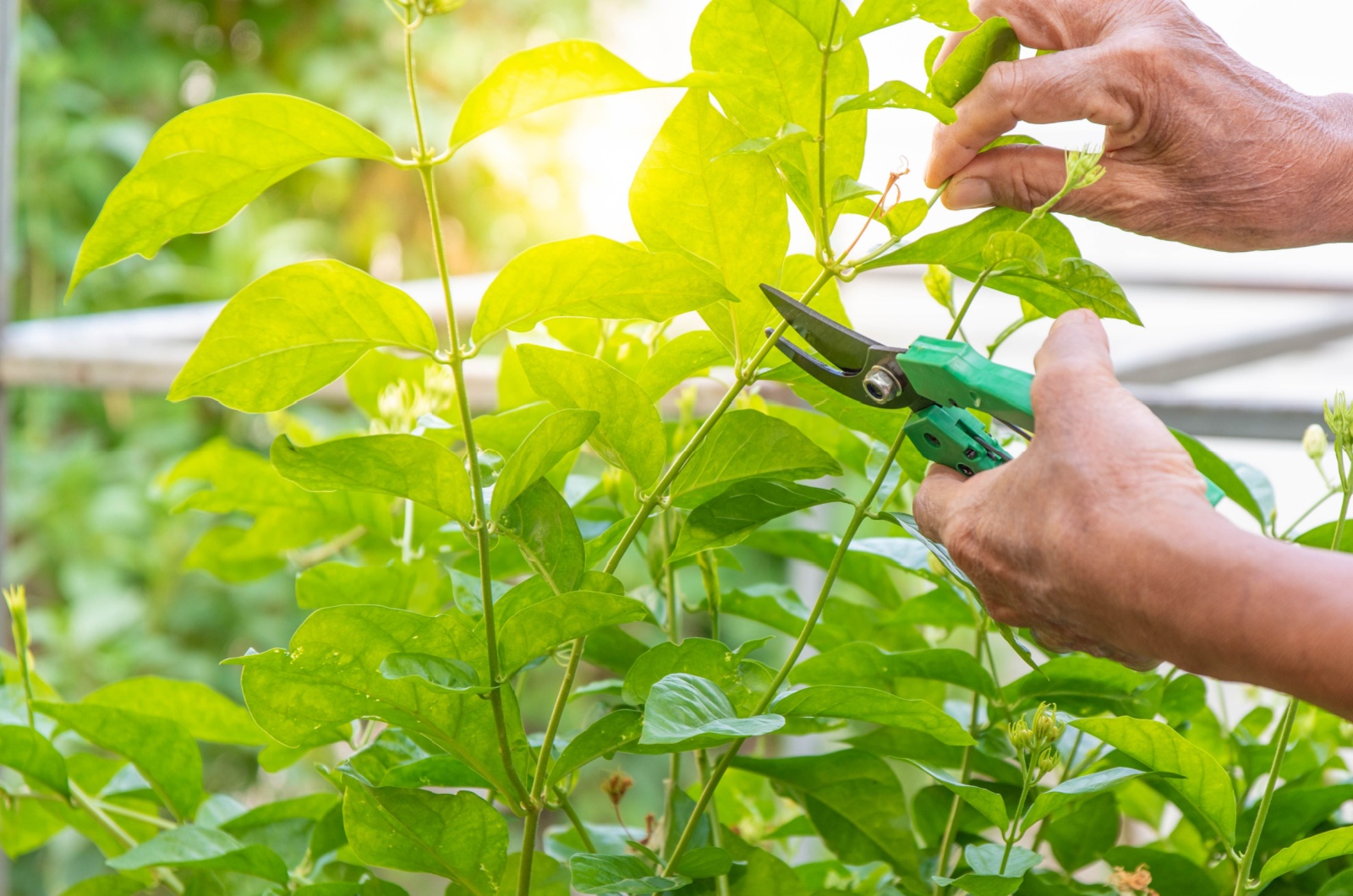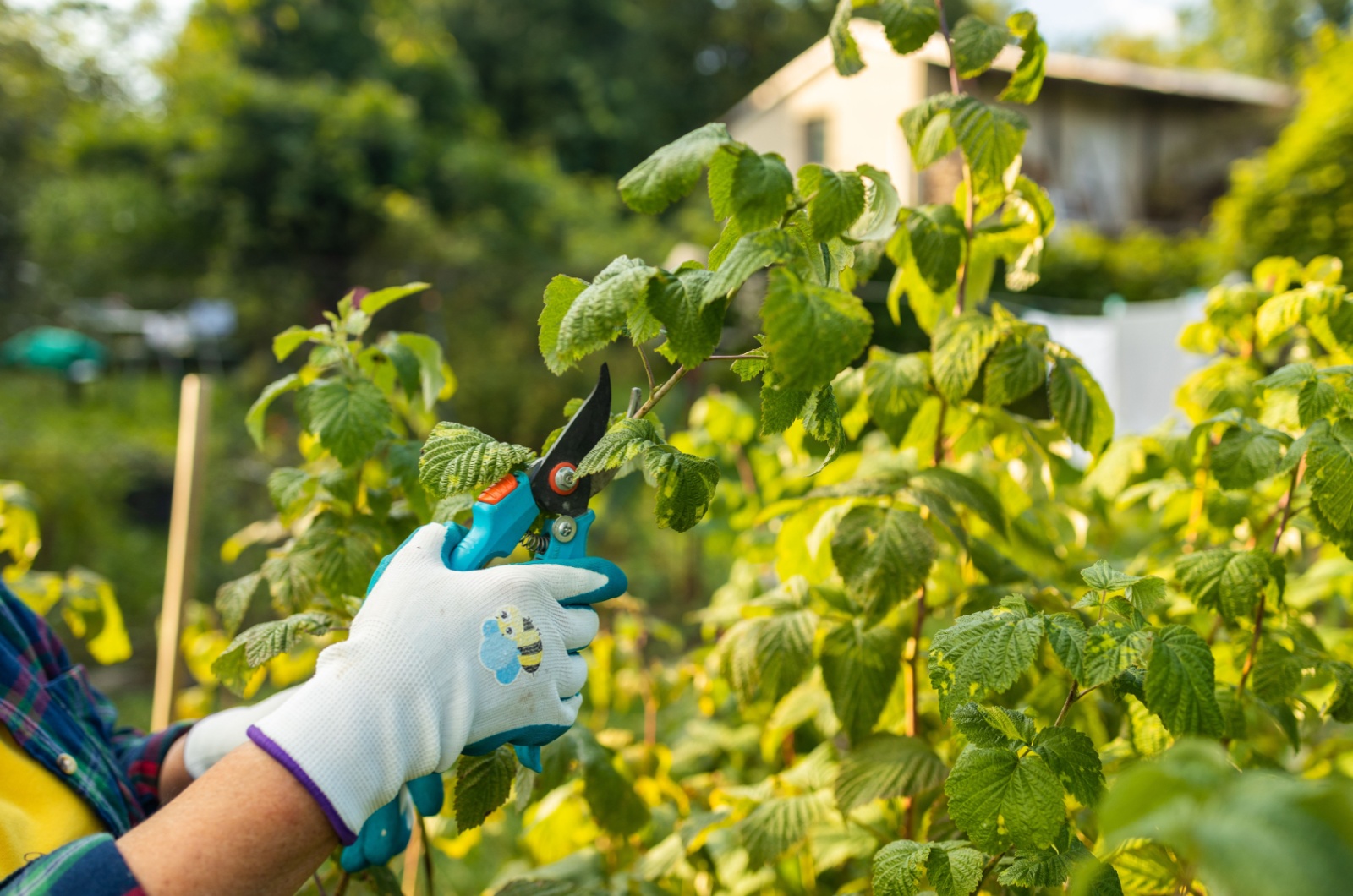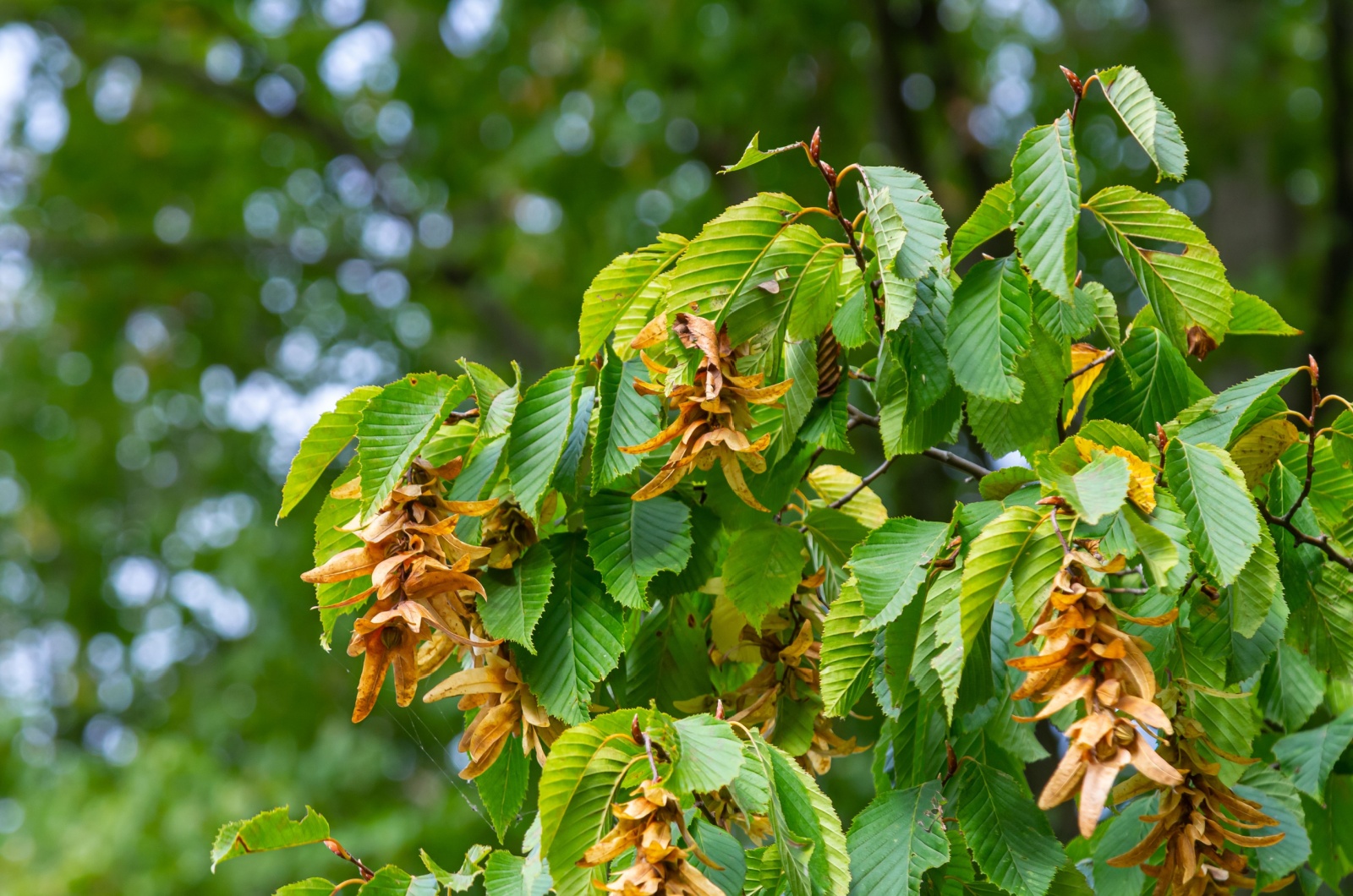When September hits, I always feel like my garden needs a little refresh. I don’t know, I guess I always had that “going’ back to school” kind of vibe, where everything needs to be brand new, including my plants.
The first thing that popped into my head was pruning. You know, I used to think pruning was only for spring; but once I tried it in fall, I was hooked.
There’s just something so satisfying about trimming back those overgrown branches and seeing your plants bounce back, ready for cooler weather. And as a bonus, the garden looks nice and neat.
Since September is around the corner, it’s time to give your plants some love (the kind that might look painful, but it’s actually sweet).
So, start by pruning…
1. Passionflower
If you have a wall or trellises that need to be covered by flowering vines, then you probably already own a passionflower.
These vines love to spread, so they need regular trimming. The best time to prune is after they’ve finished blooming in late summer. Just trim them back to a bud to keep them nice and sharp.
You can also prune them in spring if they need a bigger cut, but keep in mind that this might mean fewer flowers that summer. So, remember to trim carefully and enjoy a vibrant garden later on!
Related: 5 Stunning Climbing Plants For Trellises, Arbors, And Archways
2. Then, Go On With Honeysuckle
There are many honeysuckle varieties to choose from, including both shrubs and the classic climbing types that bring a charming cottage garden feel.
These climbing honeysuckles are summer bloomers and, while they add a lovely touch to your garden, they do need a bit of upkeep.
To keep them looking their best, lightly prune the summer-flowering types after they’ve finished blooming (which is usually in late summer or early fall). Trim back the flowering shoots by about one-third, cutting them to a side shoot.
This simple step prevents the plant from becoming overgrown and ensures that it flowers evenly, not just at the top.
Related: This Guide Is All You Need To Keep Your Climbing Honeysuckle Vines Happy And Healthy
3. Don’t Skip Out On Jasmine
Jasmine is a beloved climber known for its sweet-smelling white or pink flowers and charming vines.
No matter if you are growing summer or winter flowering varieties, the timing of your pruning can make a big difference. Pruning too early can mean missing out on those gorgeous blooms.
For summer-flowering jasmine, the best time to prune is right after it’s finished blooming, usually in late summer or early fall. This timing allows your plant to put out new growth that will be covered in flowers next summer.
When pruning, focus on removing dead or damaged stems, as well as older stems that aren’t flowering anymore and any that are tangled or growing in the wrong direction.
Related: These 4 Tips Will Make Your Jasmine Thrive And Bloom Like Never Before
4. Evergreen Hedges Will Need Trimming, Too
Evergreen hedges are known for growing quickly and needing a little trim to keep their shape. A September prune is perfect for prepping them for the winter months ahead.
For evergreen bushes like yew, cypress, and box, aim to prune in late summer or early fall once the year’s new growth has settled. This pruning window helps the cuts to heal before the harsh temperatures arrive.
To get a clean cut, you might want to set up a string line as a guide and carefully trim back the fresh growth. This will keep your hedges looking nice and tough for the upcoming winter.
5. Fall Pruning Is Ideal For Summer-fruiting Raspberries
We can all agree that there’s nothing like biting into a ripe berry right off the plant!
While these fruiting crops are relatively easy to grow, keeping them healthy and productive requires a bit of pruning knowledge.
Raspberries come in two types: summer-fruiting and fall-fruiting, each with their own pruning needs. To enjoy a continuous berry harvest, understanding when and how to prune is crucial.
For summer-fruiting raspberries, (which bear fruit on second-year canes) September is the perfect time to get pruning.
After the harvest, cut down all the older, brown canes that have already produced fruit, leaving the newer green canes to set you up for next year’s berry treasure.
This simple step will secure you a bountiful harvest and keep your raspberry patch in top shape!
Related: When And How To Prune Raspberries
6. Snip Those Rambling Roses As Well
Those sweet-looking rambling roses put on quite a show in the summer, with their glorious burst of flowers. But unlike the climbing kinds that repeat their floral display, ramblers give you that one big, beautiful flush…. and after that, they’ll need pruning.
To keep your rambling roses looking gorgeous year after year, it’s essential to prune them at the right time – late summer or early fall, after they’ve finished flowering and the hips have done their thing.
Make sure your rose is a rambler, not a climber. Pruning climbing roses now would be a huge mistake!
For your rambling roses, the pruning process is pretty straightforward. Remove all those dead or damaged stems on your ramblers first. Then, trim back the side shoots by about two-thirds.
If your rose is getting a bit too crowded, don’t hesitate to cut back a third of the oldest stems to give it a fresh start.
Related: How To Grow Roses And Effectively Deal With Common Issues
7. Finish Your Fall Pruning With Hornbeam
Hornbeam is a slow-growing, versatile tree that’s great for hedges and pleached trees.
If you already grow hornbeam in your garden, prune it in late summer to early fall – as soon as you see those leaves changing color from green to yellow, red, and brown.
Pruning at this time will help keep your hornbeam dense for winter. Use hand pruners instead of a hedge trimmer, cutting back to two or three leaves from the base.
And that wraps up our list of plants to prune in the fall, with hornbeam as the final star. Follow the tips for each plant, and you’ll get to enjoy beautiful blooms, abundant leaves, or vibrant berries later on.
Don’t forget to clean your pruning tools before and after you’re finished!

